Bibimbap Recipe: The Ultimate Korean Dish Packed with Flavor, History, and Health Benefits
Introduction to This Bibimbap Recipe
Looking for an authentic Bibimbap recipe that captures the true essence of Korean cuisine? You’ve come to the right place! Bibimbap (비빔밥), meaning “mixed rice,” is Korea’s iconic dish featuring warm rice topped with colorful vegetables, marinated meat (or tofu), a fried egg, and spicy gochujang paste. This Bibimbap recipe is not just delicious – it’s a balanced meal that’s as nutritious as it is beautiful to look at.
In this comprehensive guide, you’ll discover:
✅ An easy-to-follow Bibimbap recipe with step-by-step instructions
✅ The fascinating history behind this beloved dish
✅ Health benefits that make it a nutritional powerhouse
✅ Expert tips for perfecting your Bibimbap at home
But bibimbap is more than just a meal—it’s a cultural experience, a historical tradition, and a health-conscious choice. Whether you’re new to Korean food or a longtime fan, this dish offers something for everyone.
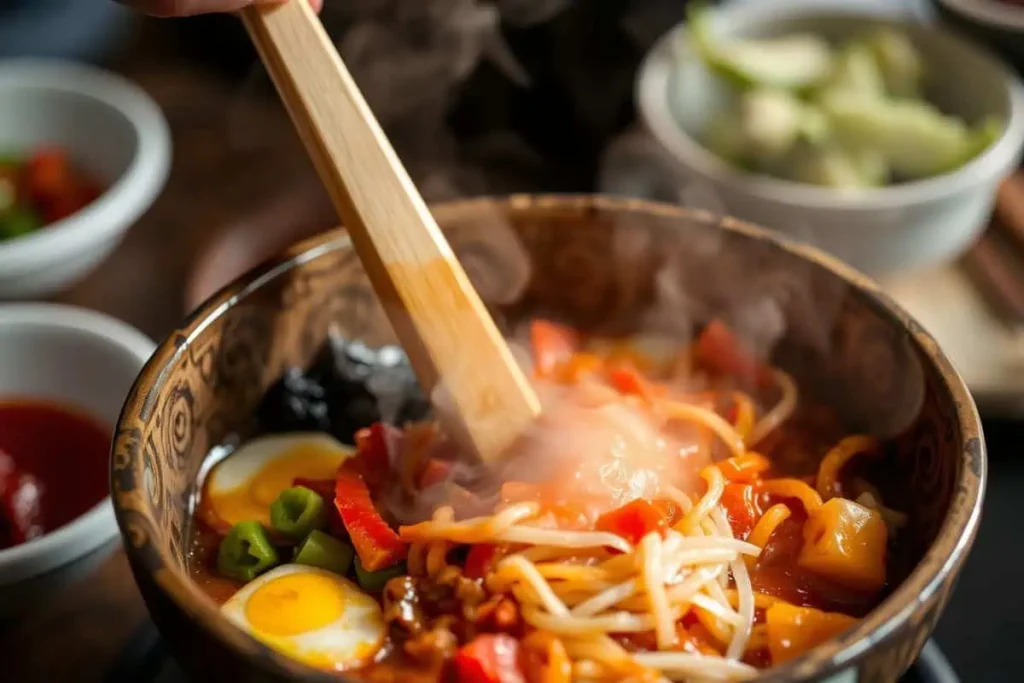
Table of Contents
The History Behind This Bibimbap Recipe: From Humble Origins to Global Fame
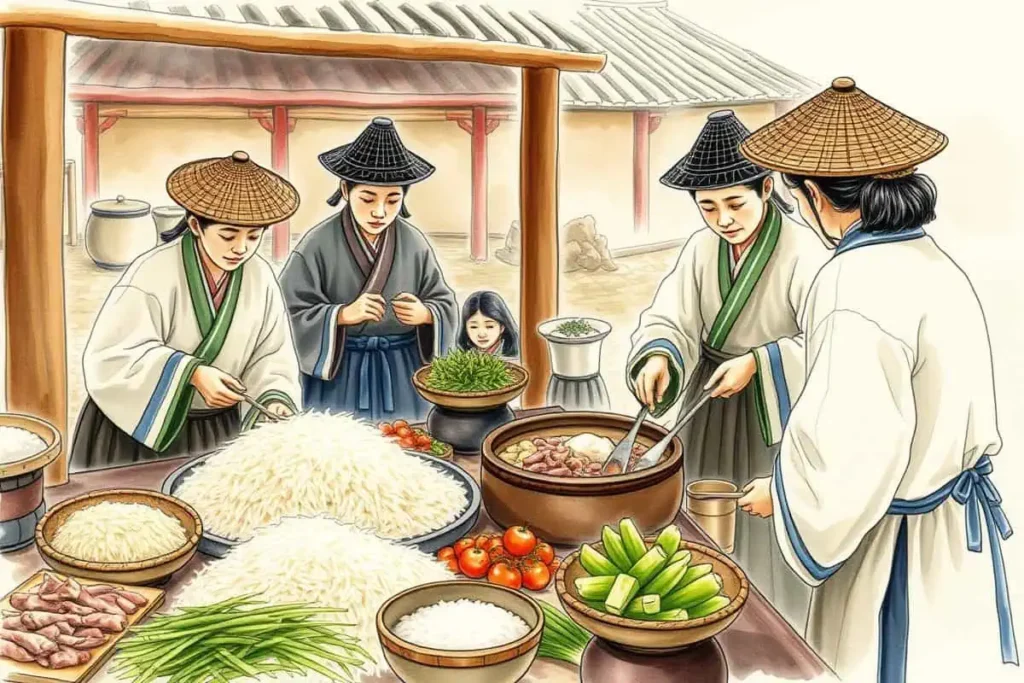
Joseon Dynasty Roots
Bibimbap traces its origins to Korea’s Joseon Dynasty (1392–1897), where it began as a practical peasant dish. Farmers would mix leftover vegetables, rice, and small portions of meat to create a filling, balanced meal. Over time, it evolved beyond necessity into a beloved culinary tradition.
Jeonju: The Birthplace of Bibimbap
The city of Jeonju is famed for its premium version of bibimbap, featuring high-quality ingredients like beef, fresh mountain vegetables, and a rich sesame oil dressing. Jeonju bibimbap is so revered that it has earned UNESCO Intangible Cultural Heritage status, cementing its place in Korean food history.
Modern Adaptations
Today, bibimbap has countless variations—from dolsot bibimbap (served in a sizzling stone bowl for crispy rice) to vegetarian and vegan versions. Its adaptability has made it a global favorite, appearing in restaurants worldwide.
Why Koreans Love Bibimbap
Beyond its taste, bibimbap holds deep cultural significance:
✅ Harmony & Balance – The dish embodies the Korean philosophy of yin-yang balance, combining colors, textures, and flavors in perfect proportion.
✅ Interactive Eating – Mixing the ingredients just before eating creates a fun, engaging experience.
✅ Versatility – It can be customized for any diet (meat lovers, vegetarians, or spice seekers).
✅ Everyday Comfort Food – Quick to prepare yet deeply satisfying, it’s a staple in Korean households.
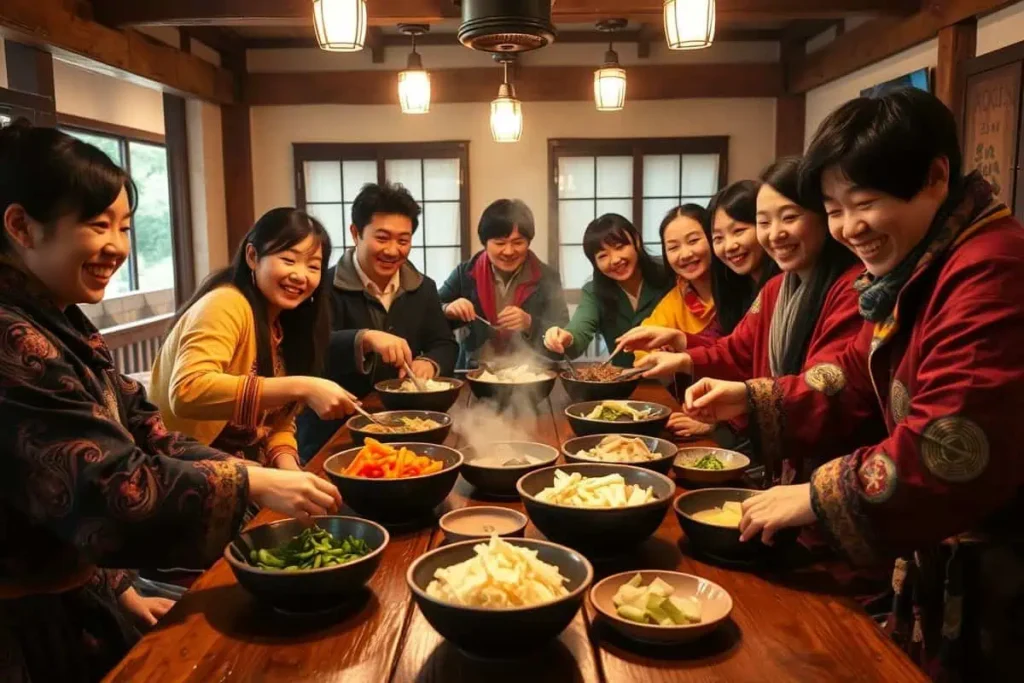
Why This Bibimbap Recipe Works
What makes our Bibimbap recipe special:
🔥 Perfect Flavor Balance – Sweet, spicy, savory, and nutty in every bite
🌈 Vibrant Colors – Each vegetable adds visual appeal and nutrition
🍳 Customizable – Easily adapt for vegetarians or spice preferences
⏱ Meal-Prep Friendly – Components can be prepared ahead
Health Benefits of This Bibimbap Recipe
This Bibimbap recipe offers:
✔ Balanced Macronutrients – Carbs (rice), protein (meat/tofu), and fiber (vegetables) in one bowl.
✔ Antioxidant-Rich Veggies – Spinach, carrots, bean sprouts, and zucchini boost immunity.
✔ Probiotic Power – Gochujang (fermented chili paste) aids digestion.
✔ Low in Unhealthy Fats – Traditionally prepared with minimal oil.
✔ Sustained Energy – Perfect for active lifestyles.
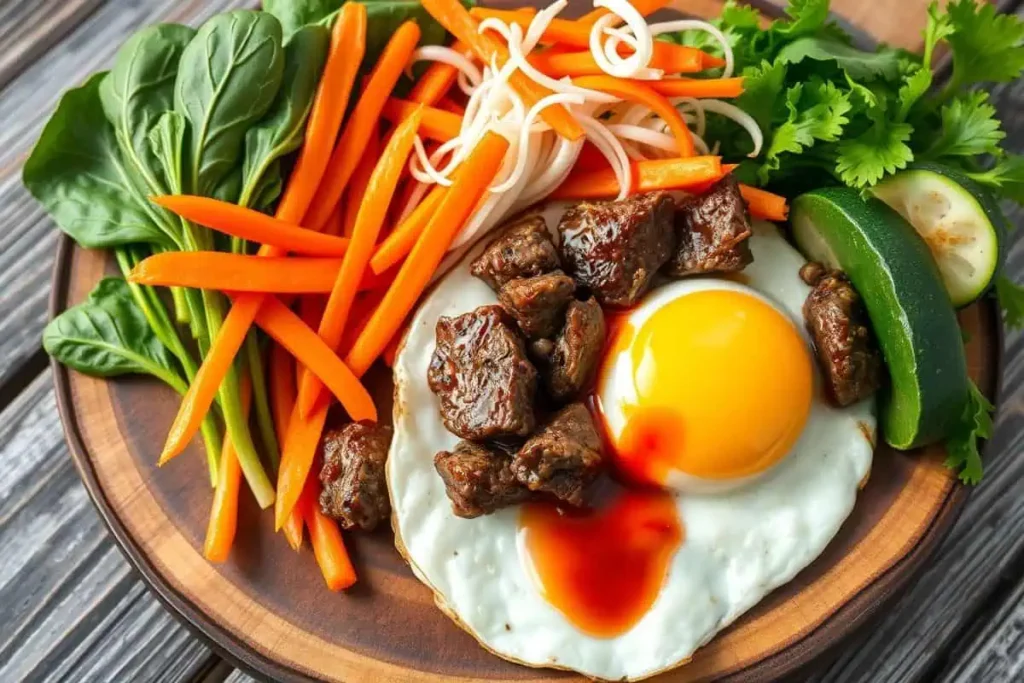
Step-by-Step Bibimbap Recipe to make at home
Ingredients (Serves 2-3)
- 2 cups cooked short-grain white rice (preferably warm)
- 150g (5 oz) beef bulgogi or thinly sliced ribeye (optional for vegetarian)
- 1 cup spinach
- 1 medium carrot, julienned
- 1 cup bean sprouts
- 1 zucchini, julienned
- 3 shiitake mushrooms, sliced
- 2 eggs
- 2 cloves garlic, minced
- 2 tbsp soy sauce (divided)
- 1 tbsp sesame oil (divided)
- 1 tsp sugar (divided)
- Salt and pepper, to taste
- 2 tsp vegetable oil (for sautéing)
- 3 tbsp gochujang (Korean chili paste)
- 1 tsp toasted sesame seeds (for garnish)
- Optional: Sliced nori (seaweed) and green onions
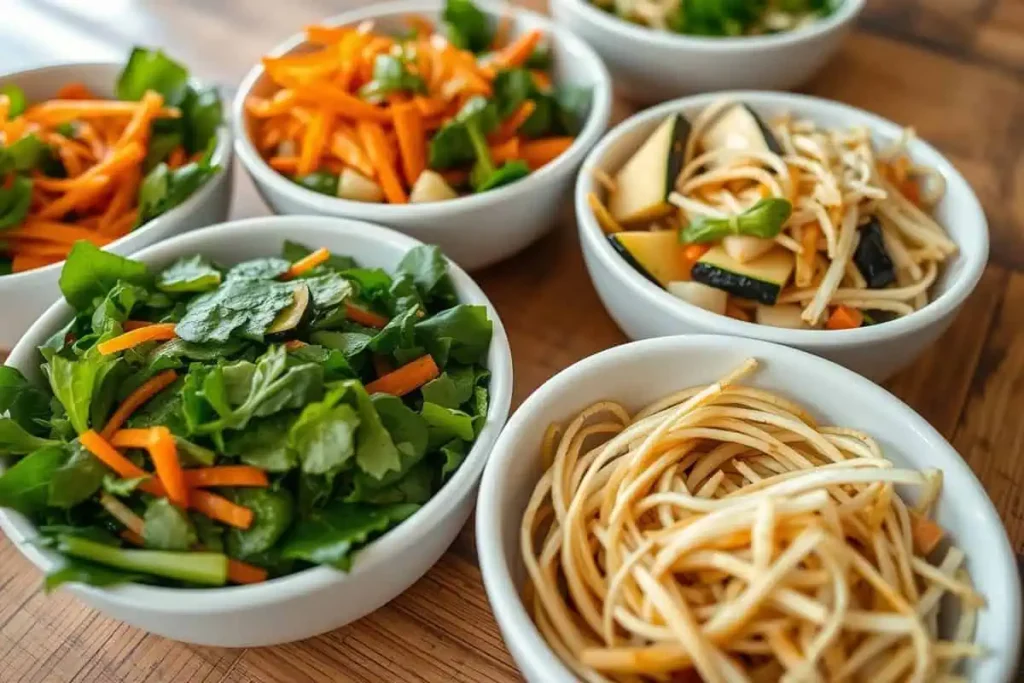
Step-by-Step Instructions
1. Prepare the Rice
Cook short-grain rice according to package instructions. Keep warm.
2. Blanch and Season Spinach
- Blanch spinach in boiling water for 30 seconds, then rinse in cold water.
- Squeeze out excess water and season with 1 tsp sesame oil, 1 minced garlic clove, salt, and a dash of soy sauce.
3. Sauté Carrots and Zucchini
- Heat 1 tsp vegetable oil in a pan.
- Sauté carrots with a pinch of salt until tender (2-3 minutes). Set aside.
- Repeat for zucchini.
4. Cook Bean Sprouts
- Boil bean sprouts in salted water for 2 minutes.
- Drain and season with 1 tsp sesame oil, garlic, and salt.
5. Sauté Mushrooms
- Heat 1 tsp oil and sauté mushrooms with 1 tsp soy sauce until soft.
6. Cook the Beef (Bulgogi Style)
- Marinate beef in 1 tbsp soy sauce, 1 tsp sugar, and garlic for 15 minutes.
- Stir-fry in oil until caramelized (3-4 minutes).
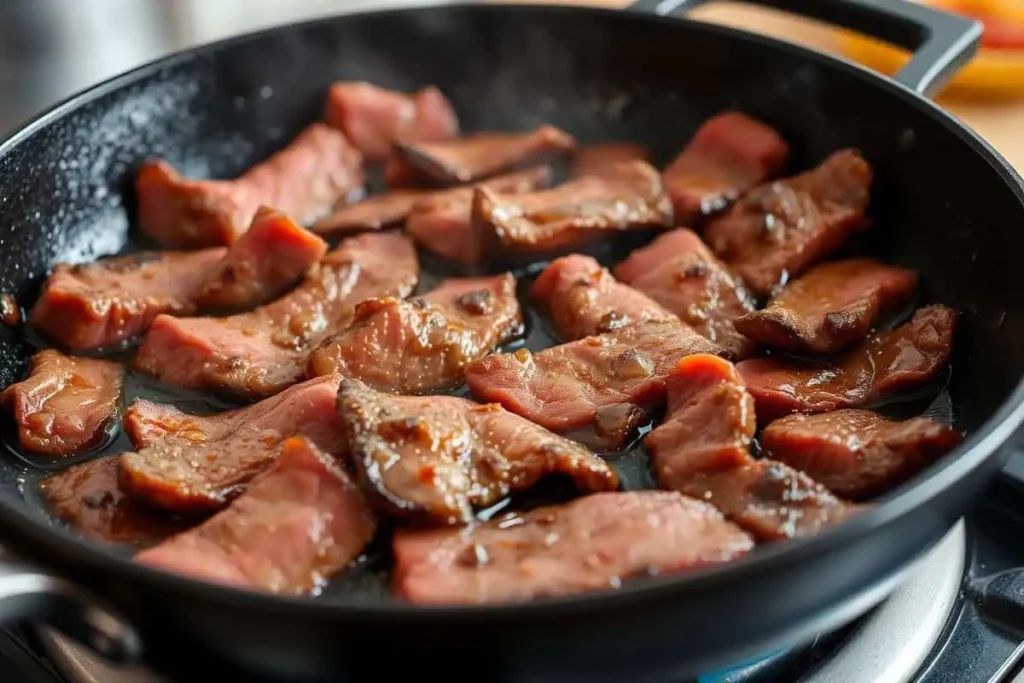
7. Fry the Eggs
Fry eggs sunny-side-up for a runny yolk.
8. Assemble the Bowl
- Place warm rice as the base.
- Arrange vegetables, beef, and egg in sections.
- Add gochujang on top.
- Drizzle with sesame oil and sprinkle sesame seeds.
9. Serve and Mix!
Mix thoroughly before eating to combine all flavors.
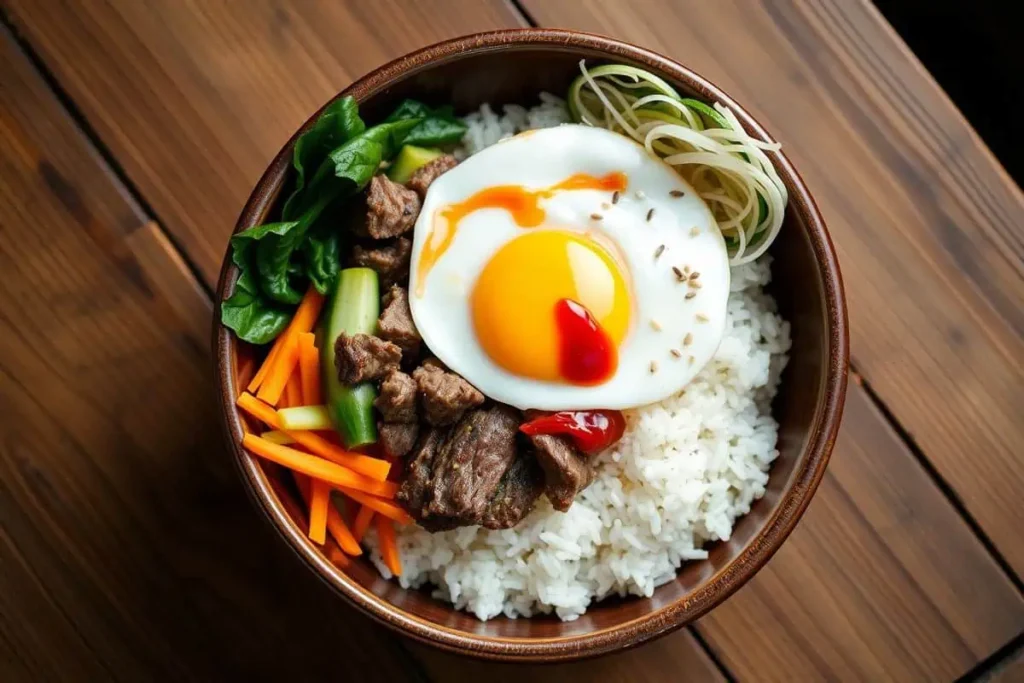
Final Thoughts on This Bibimbap Recipe
Bibimbap is more than just a dish—it’s a celebration of Korean heritage, flavor, and wellness. Whether you enjoy it at a restaurant or make it at home, each bite offers a delicious glimpse into Korea’s rich culinary culture.
Ready to try it? Grab a spoon, mix well, and savor the magic of bibimbap!

